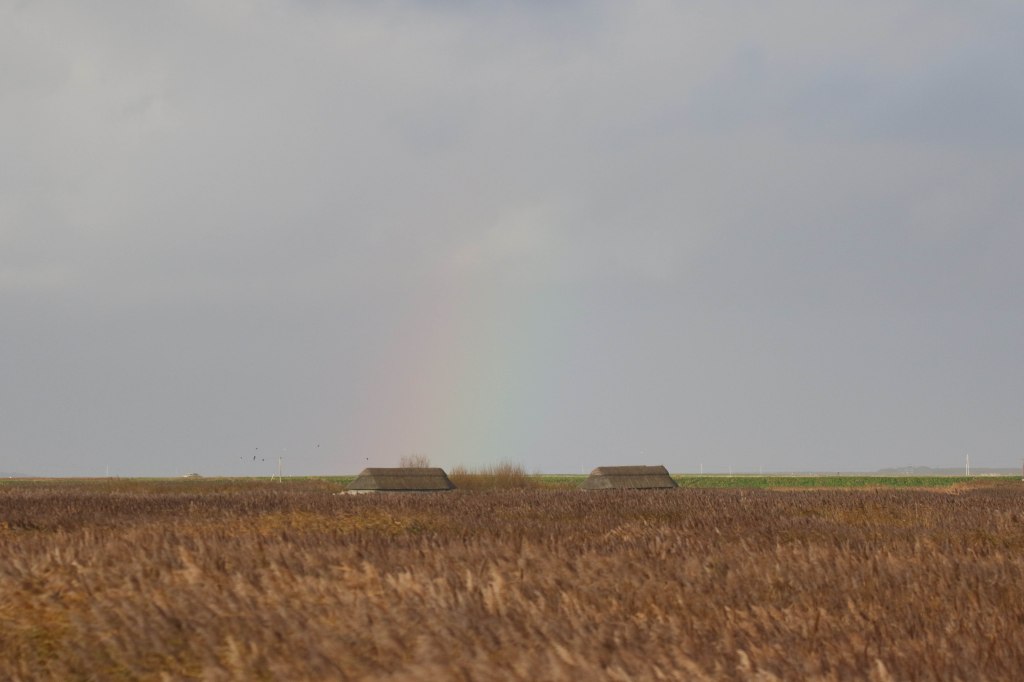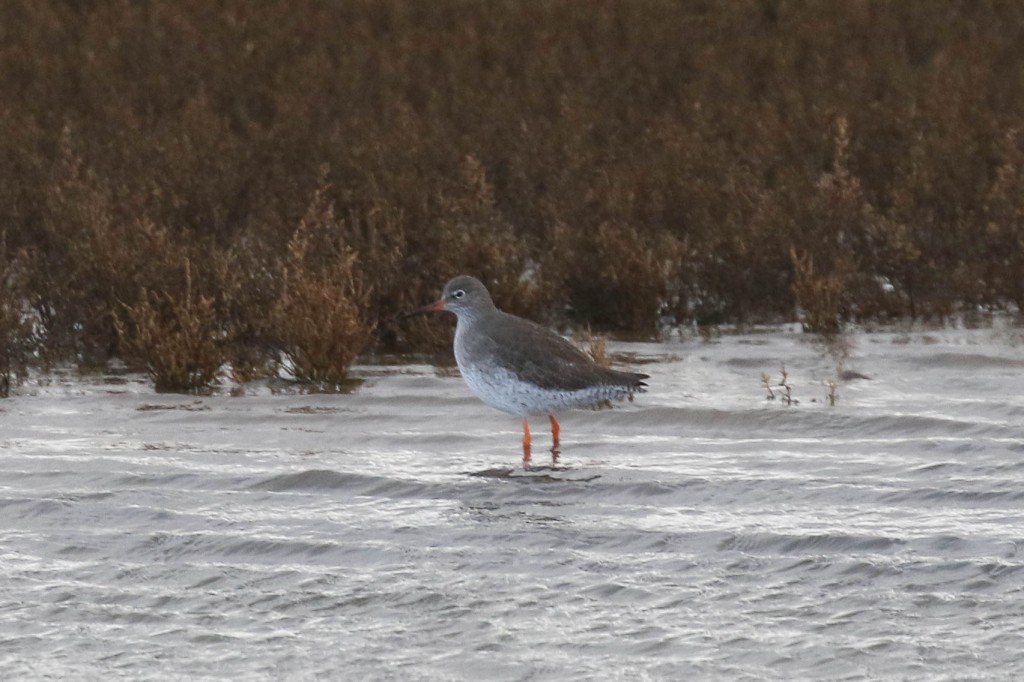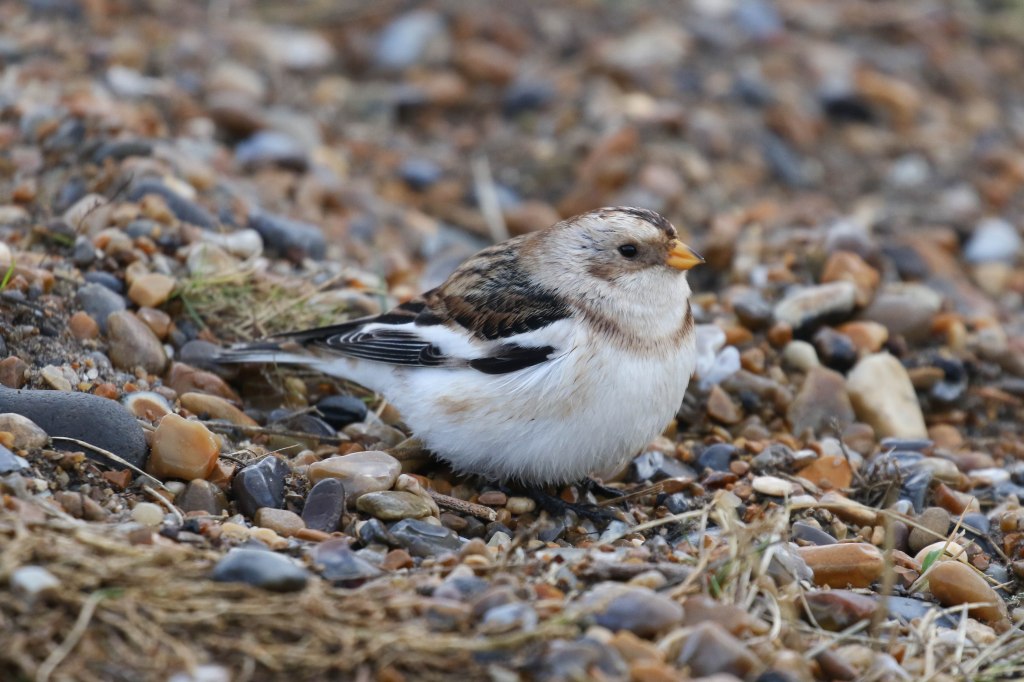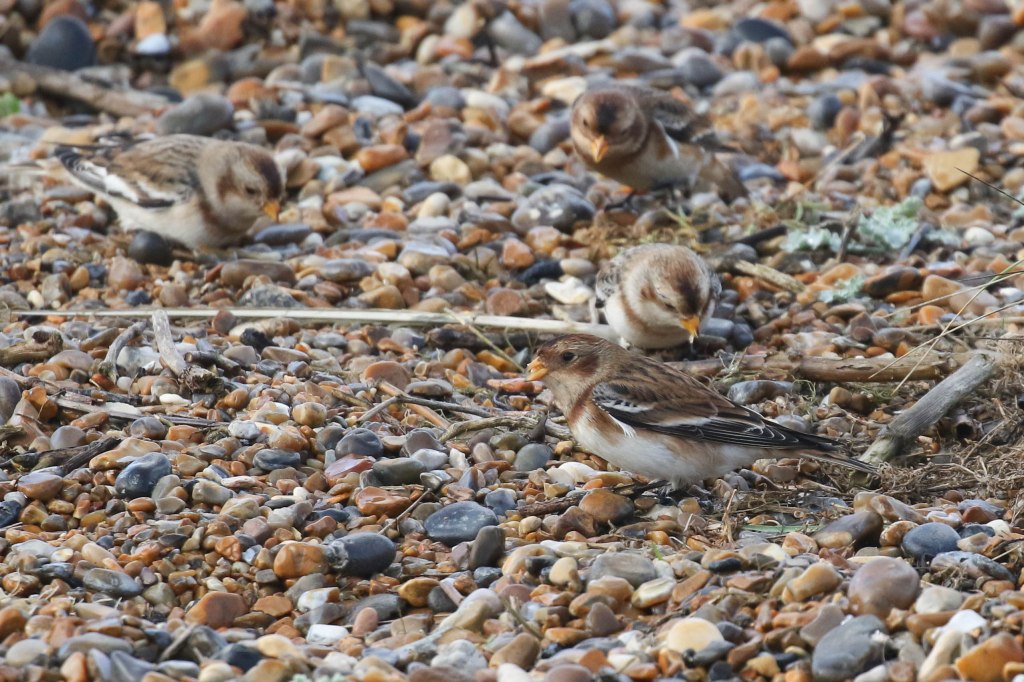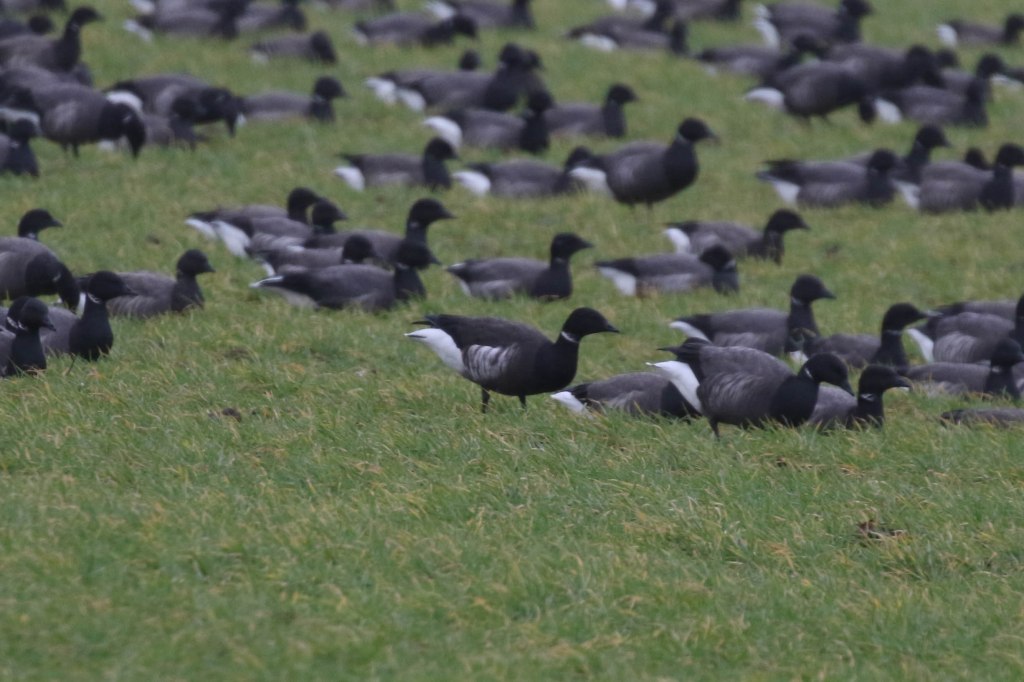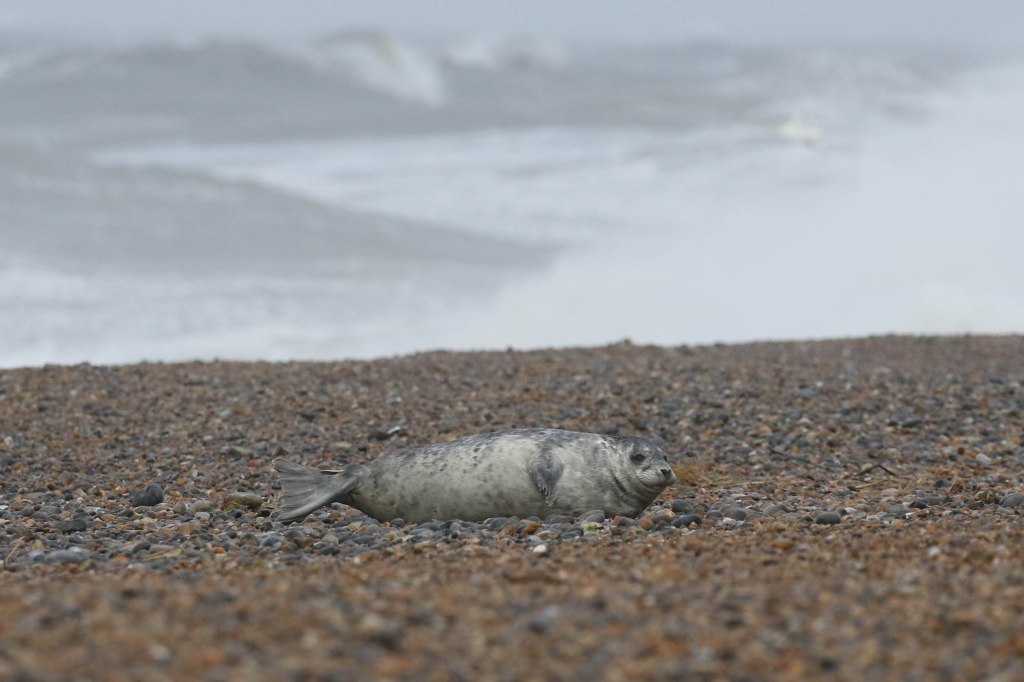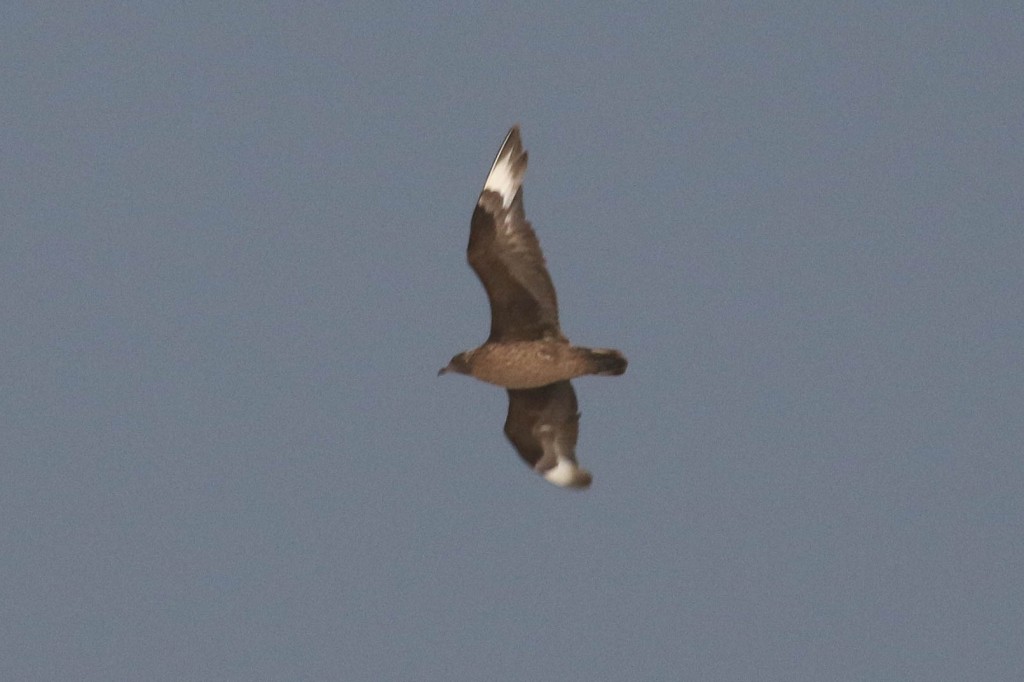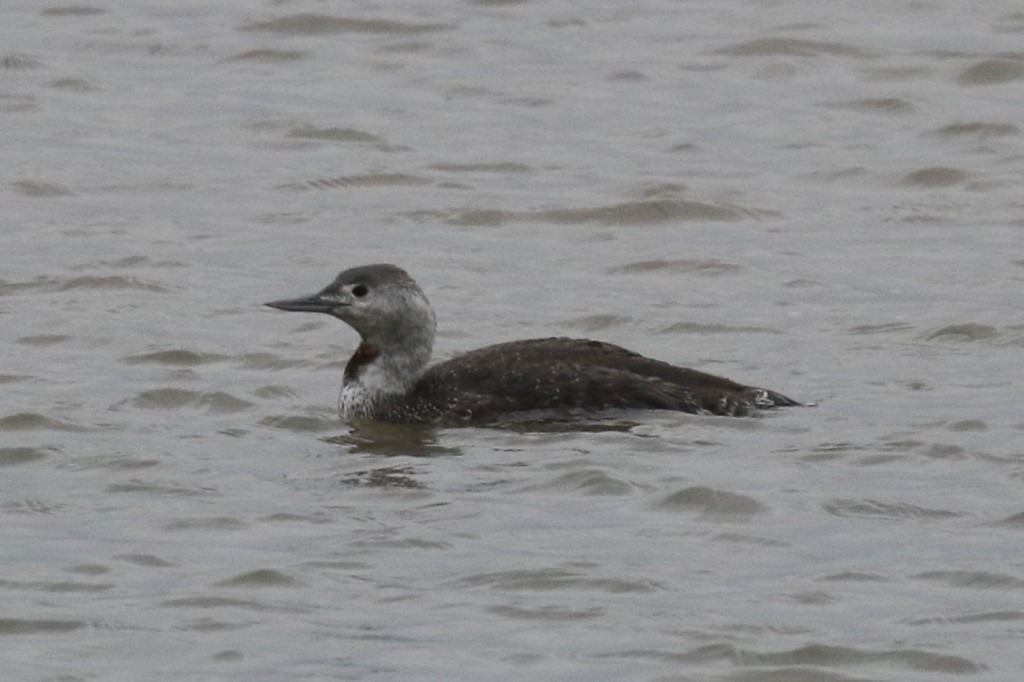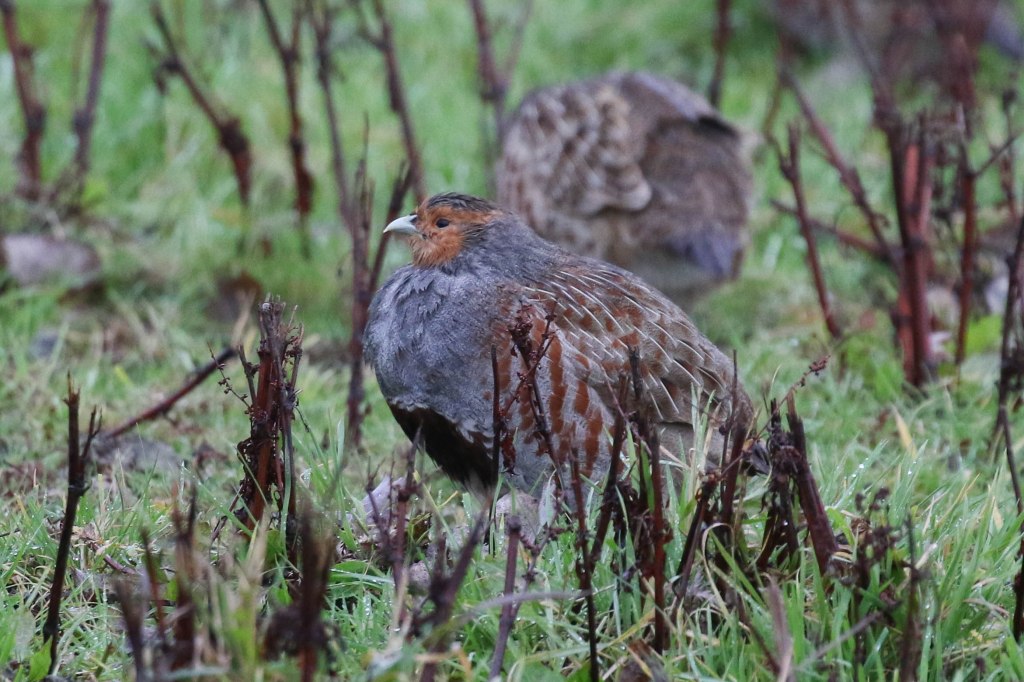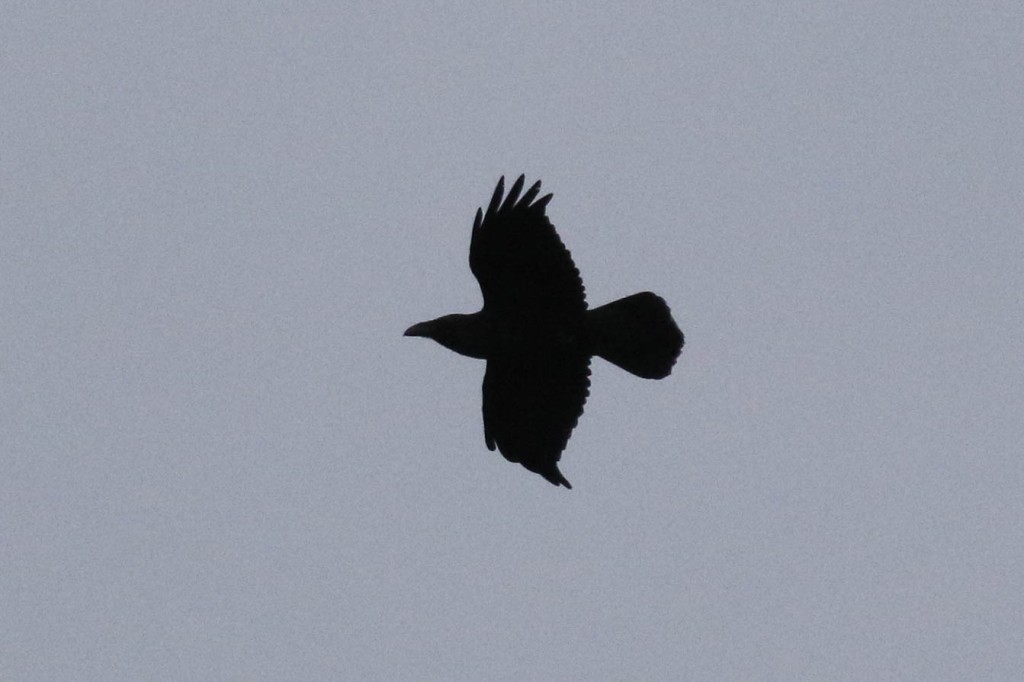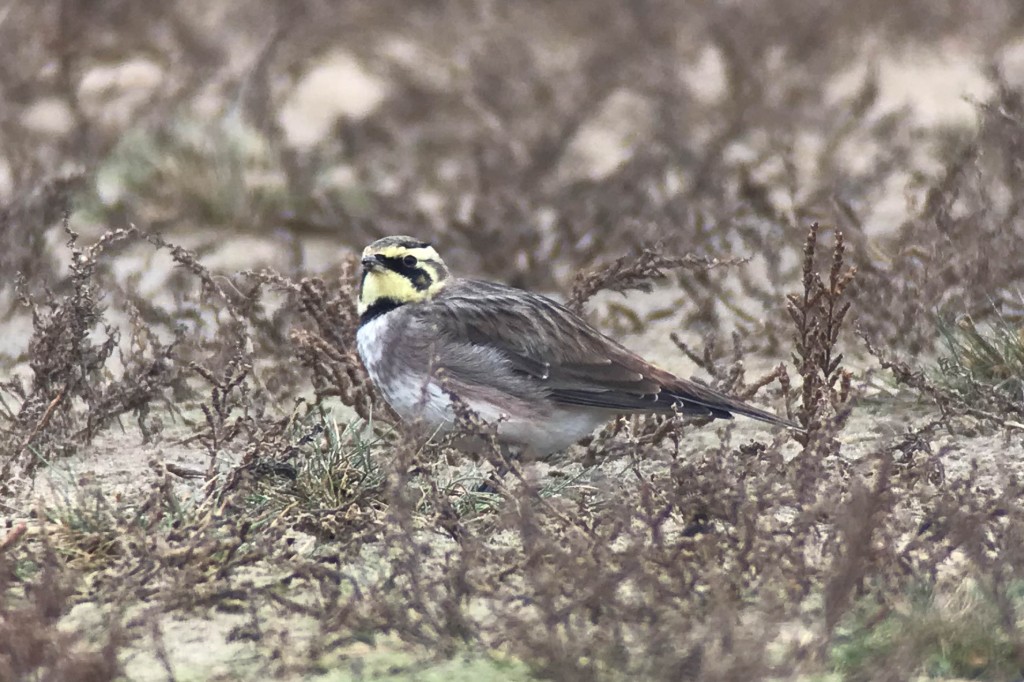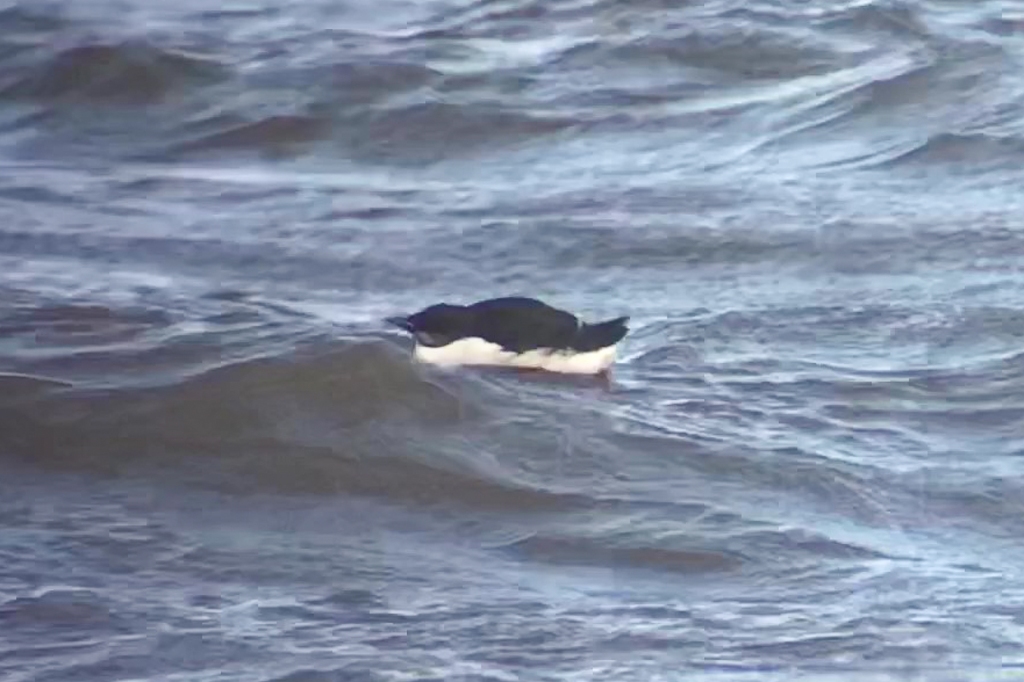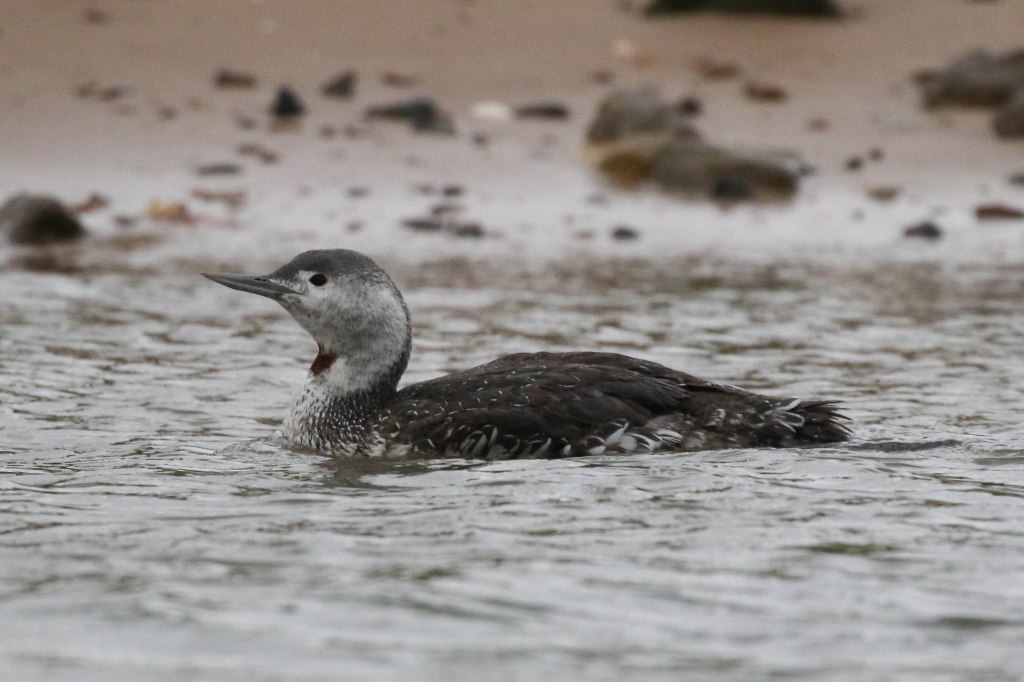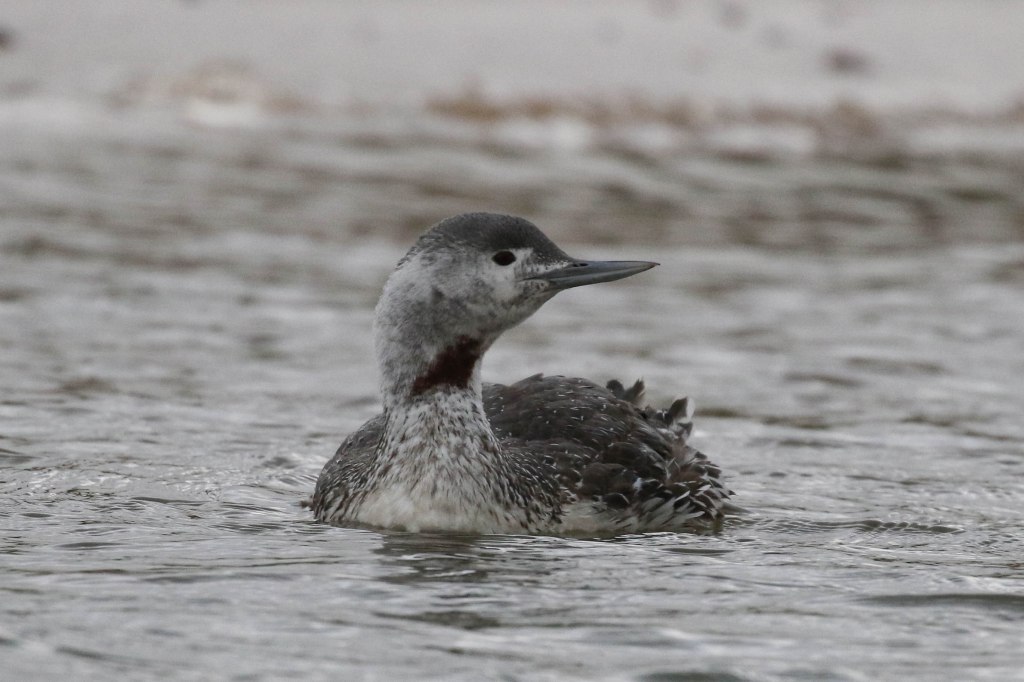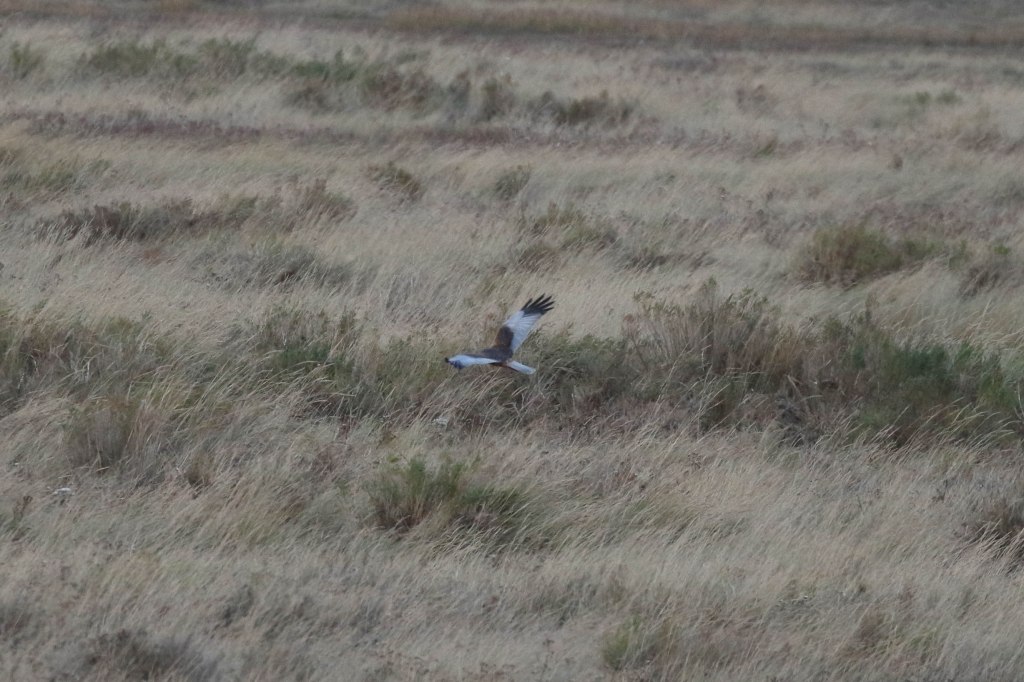Look out for an unfortunate Puffin, a very special Little Auk and how I purchased my large print Collins Guide on the beach at Cley in Marcus's report below.
28th Nov 2021 – Early Winter Tour, Day 3
Day 3 of a three day Early Winter Tour, our last day. It was another cold and windy day but thankfully the wintry showers first thing dried up quite quickly, and after that they were much fewer and further between for the rest of the day.
When we got down to Wells beach car park it was sleeting quite steadily, so we stopped in the minibus for a couple of minutes while we waited for it to pass over. Once it had stopped, we walked up to the lifeboat station.
The tide was just coming in, and we scanned the mud on the far side, where there were lots of waders. Large areas were covered with Oystercatchers and Knot, and there were several Grey Plover and Ringed Plover scattered around too, along with groups of Sanderling and Dunlin. A few Turnstones were picking around the patches of shingle. Five or six Bar-tailed Godwits were working their way along the near edge of the sandbar opposite us.

We had a quick look in the outer harbour, to see if anything had been blown in but we couldn’t see anything out on the water. A Red Kite was hanging in the air over the beach opposite.
Back to the car park, we crossed over to the other side and continued on into the woods. We stopped to scan the boating lake. There were several Tufted Ducks diving in the middle and a few Little Grebes around the edges, plus three Coot and a single Moorhen. A Kingfisher was perched on a briar stem over the edge of the water by the channel opposite. It looked stunning in a brief moment of sunshine, before it shot off low over the water.
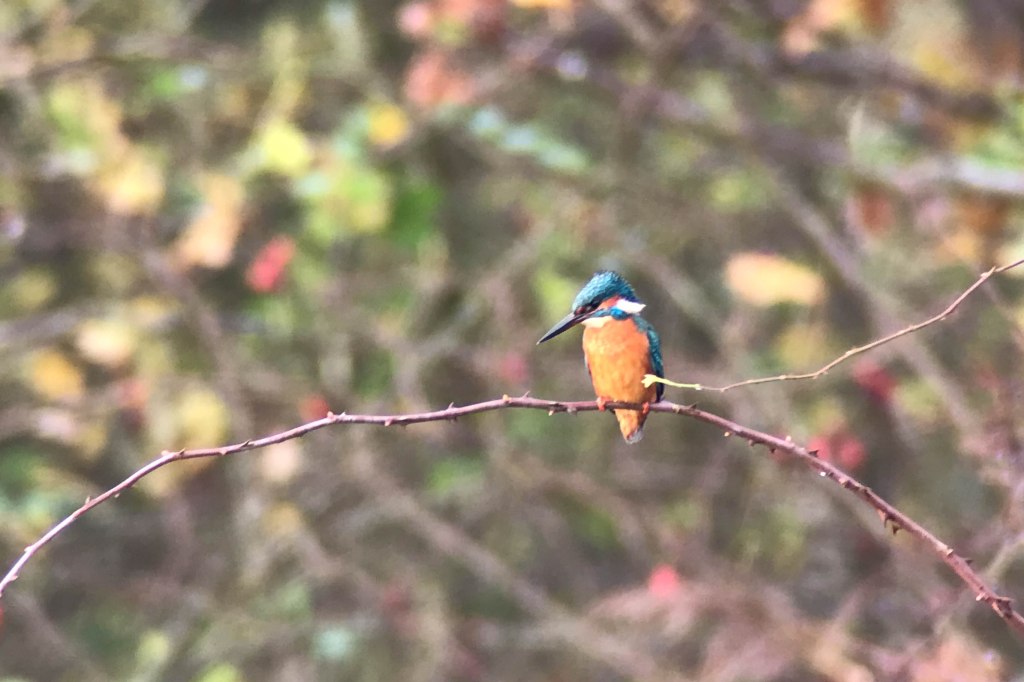
We carried on along the track towards the trees, but hadn’t got much further when we noticed a stunning pink male Bullfinch perched in a bramble-draped hawthorn ahead of us. Looking more closely, we could see a browner female feeding on the brambles, just below. A couple of dogwalkers came past us and unsurprisingly the Bullfinches flew off as they approached.
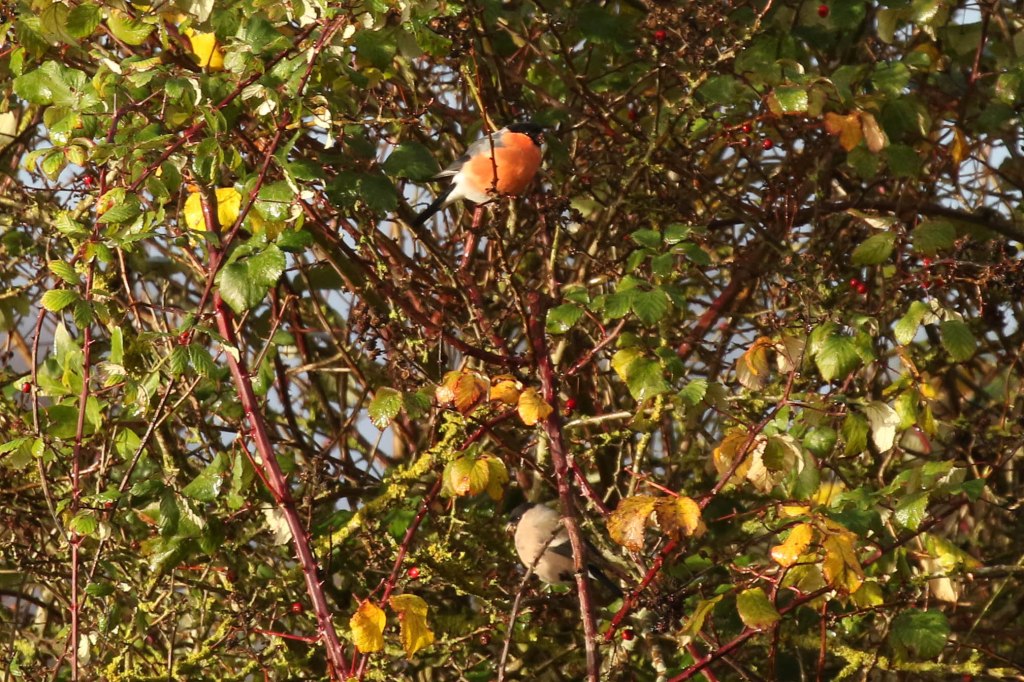
Making our way into the birches, a Jay flew up from the grass under the trees. We flushed a couple of Blackbirds, but otherwise there was no obvious sign of any new arrivals having come in from the continent, despite the favourable winds.
When we got to the corner of The Dell, we came across a tit flock. We looked up to see several Long-tailed Tits flick up into the birches. We climbed up the slope onto the top of the dune ridge on the north side, where we were on eye level with the birds. They were moving through the branches very quickly, but in among the mix of tits, we picked up a couple of Goldcrests, Treecreepers, and at least one Chiffchaff too.
We followed the tit flock round the east side of the Dell, where the same or another Chiffchaff flicked through the birches ahead of us, and out onto the main track again. We flushed a Reed Bunting from under the brambles by the path, which perched deep in cover for a few seconds flicking its tail before flying back into the trees. A little further along, we found three Chiffchaffs together now. Unfortunately they didn’t stop long enough for us to see whether any of them might have been more interesting, before they disappeared deeper into the trees.
We crossed over into the open area south of the main track, and stopped by the gap in the bushes to scan the grazing marshes. There were no geese on here today, but we did see a Red Kite over Holkham Park in the distance and a Common Buzzard circled over the edge of the caravan park.
There were a few more Blackbirds in the bushes here and we came across a single Redwing in the far corner, but it flew off ‘teezing’ as we approached. A juvenile Peregrine drifted over the pines. As we started to cut back through the birches towards the main track, a Woodcock flew up from the grass and shot off into the trees.
One of the group was interested in fungi, and we stopped to look at some growing by the path now. A large Brown Birch Bolete looked like it was easy enough to identify, but some of the others would require a bit more study. We took a few photographs as we made our way back towards the car park.
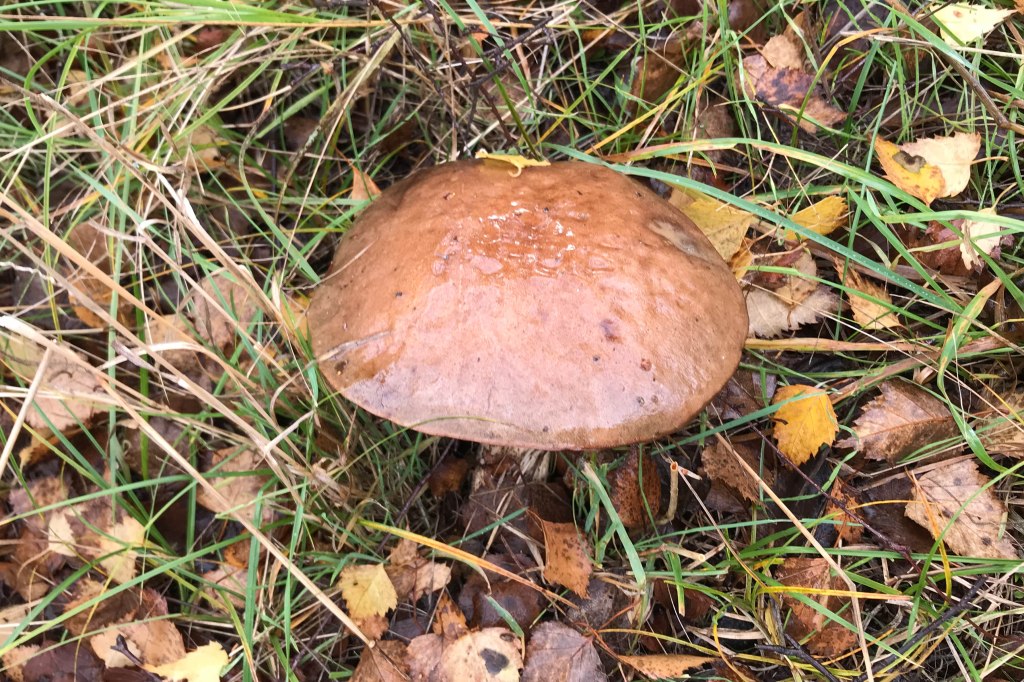
We were just heading over to the beach cafe when we got a message to say that a Little Auk was to be released at the lifeboat station at midday. Perfect – time for a coffee in the cafe first!
Coffees duly drunk, we were just getting ready to go up to the lifeboat station when we got another message to say there was a Puffin now in the harbour channel. Sure enough, there it was bobbing around on the water off the lifeboat station. It was an adult too, with a very bright bill still. Everybody had a look through the scope and we had then taken our eyes off it, when someone else announced that a Great Black-backed Gull had dropped onto the water out where the Puffin was. Horrified, we looked back to see the gull with the Puffin in its bill. Even worse, after drowning it, the gull seemed to lose interest and flew off, leaving it behind. All a bit gruesome – but nature red in tooth and claw. It also highlights why these auks generally live far out to sea, and something is normally already wrong if they are brought inshore.

Two people arrived carrying a large plastic box, with an entourage of curious onlookers following. The Little Auk had arrived! It had been found in Reepham, about 15 miles inland, last night, presumably disoriented and blown there by the gale force winds. Mostly these birds do not survive overnight, but it was apparently livelier now than it had been when it was found, which was an encouraging sign. It wriggled and squirmed as it was picked up to be released.

The Little Auk flapped out onto the water and looked back at the people gathered on the shore watching it. It swam slowly further out into the channel and then started diving – another encouraging sign. Fingers crossed for it.
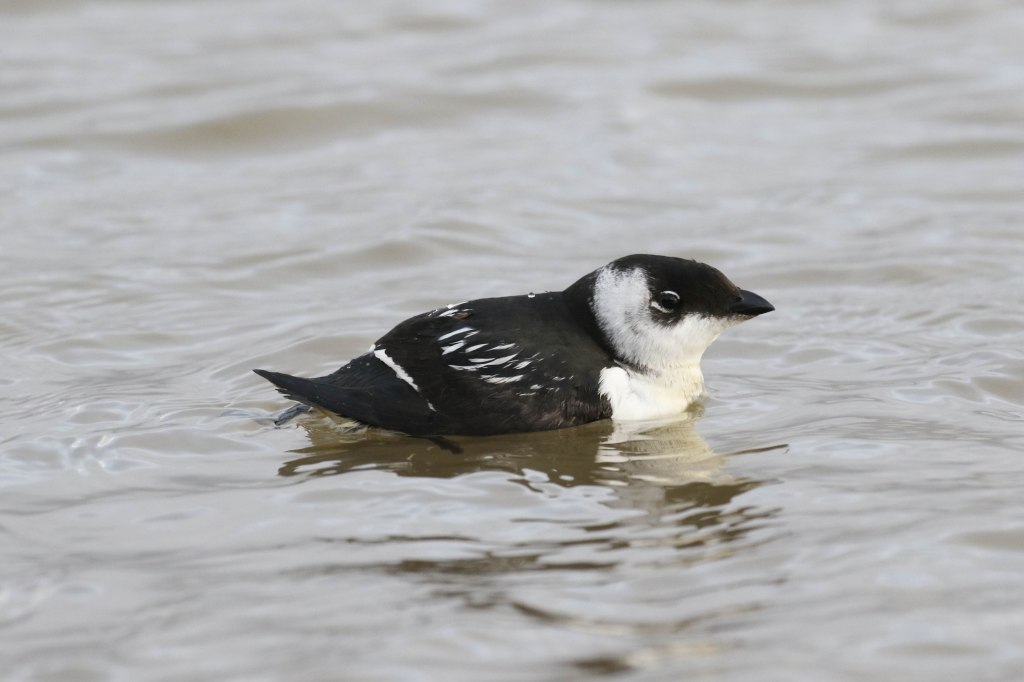
Back to the minibus, it was still a little early for lunch, so we drove round to Holkham and stopped to scan the grazing marshes. We could see three Great White Egrets out with the Belted Galloway cattle immediately and it was not long before the two Cattle Egrets appeared too, from where they were hidden behind the cows. They flew round and landed again out of view.
There were lots of geese out on the grazing marshes but looking through them most were Greylags, plus a pair of Egyptian Geese. Scanning round, we eventually found the White-fronted Geese we were looking for, tucked down in the corner, keeping their own company. Noticeably smaller and darker than the Greylags, through the scope, we could see the white surround to their bills from where White-fronted Geese get their name. Numbers are starting to increase slowly now, as we get into winter, and we counted twenty four here today.
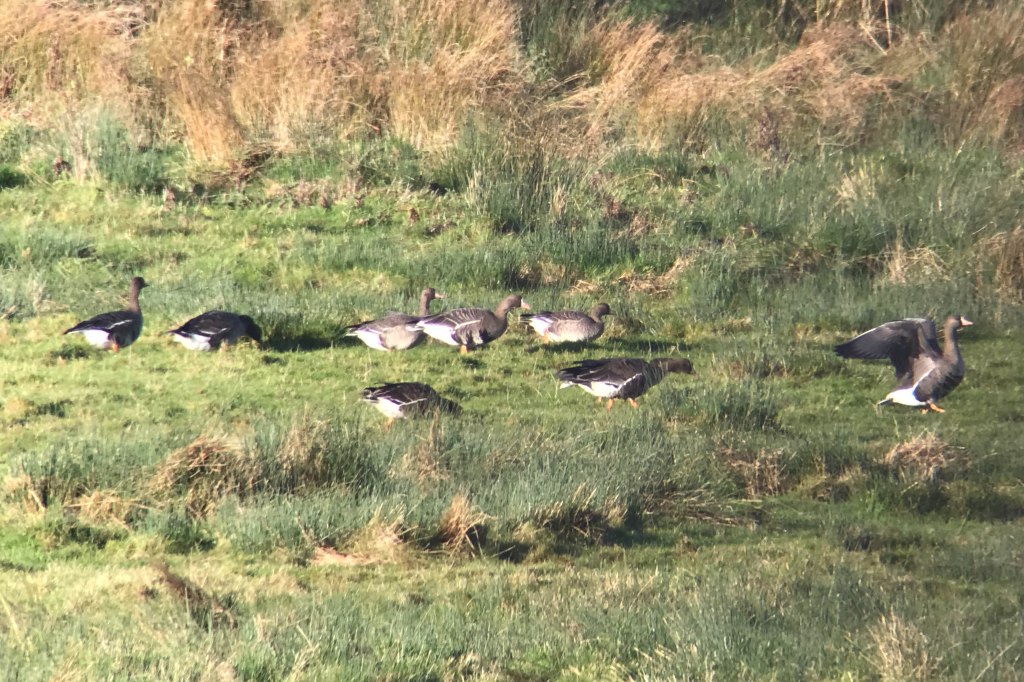
There were several Marsh Harriers and Common Buzzards around the grazing marshes too. A juvenile Peregrine circled overhead, before disappearing over the Park behind us. Then another Peregrine, this time an adult, appeared distantly over pines. As we watched, it accelerated and stooped towards something over by Lady Anne’s Drive.
We headed round to Lady Anne’s Drive ourselves, for a late lunch in The Lookout. There were just a few Greylags on the marshes here again today, but a small skein of Pinkfeet did come over calling while we were eating.
We didn’t have much time left now, but with a couple of requests to see if we could get better views of Glaucous Gull, we headed back to Cley where one had been reported again earlier this morning. When we got to the beach car park, we asked some of the locals seawatching but unlike yesterday, there had apparently been no further sign of it since early morning. The lingering Black Guillemot had been seen earlier too, but there was no sign of that either now. A Grey Seal pup had come up over the beach and proceeded to go straight past everyone into the car park.
The seawatchers had thinned out now and we managed to get into the front of the shelter, to scan the sea. There were still a few things moving – a steady movement of Common Guillemots past, a few Red-throated Divers and several Eider – a couple of small groups past close in, and a much larger flock of around thirty a long way out.
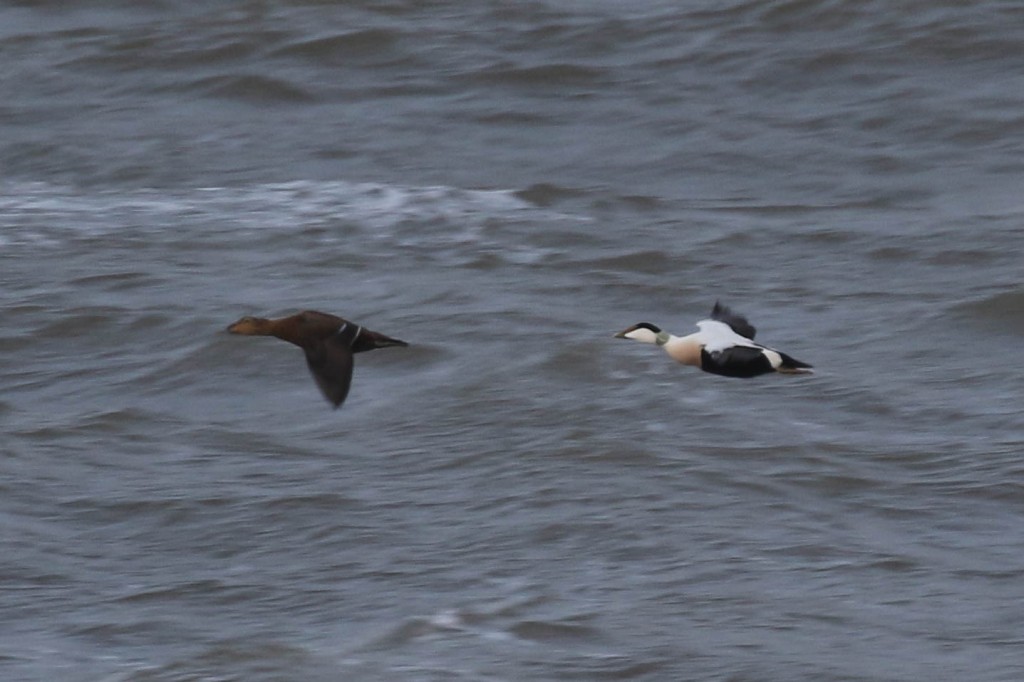
There were lots of gulls offshore, feeding in the surf. Gradually they started moving back west along the coast, heading back towards the harbour to roost. We figured there had to be an outside chance we might catch a Glaucous Gull heading in with them, as the two had done yesterday. Scanning through, we did manage to pick out a 1st winter Mediterranean Gull on the sea, and another, this time an adult, flew past, but no sign of anything rarer. We had probably exhausted our luck for this weekend!
The light was starting to go now. Somewhat bizarrely, we had managed to arrange a book delivery for one of the group, which was very kindly dropped down by WildSounds to where we were seawatching! Personal service! Once it arrived, it was time to head for home.
What an amazing few days it had been!
